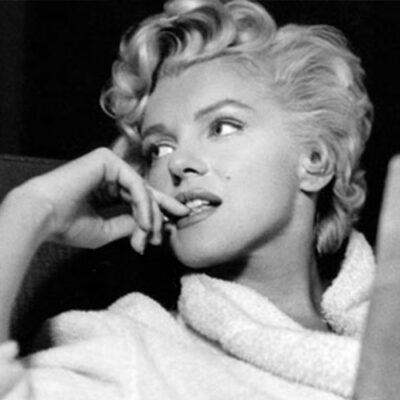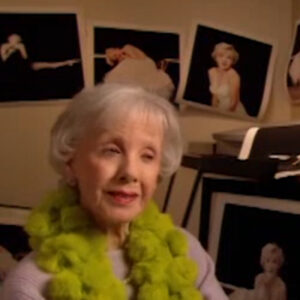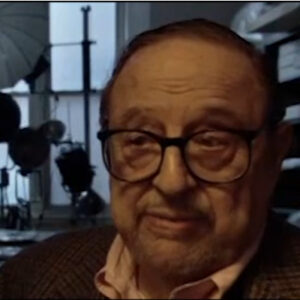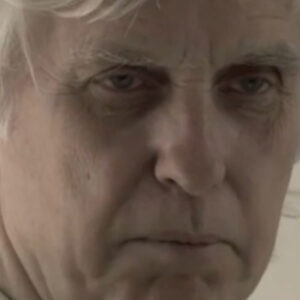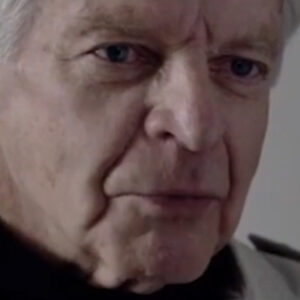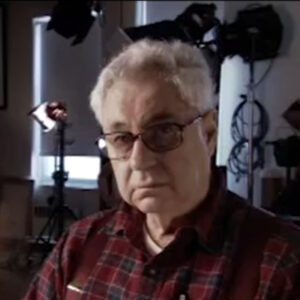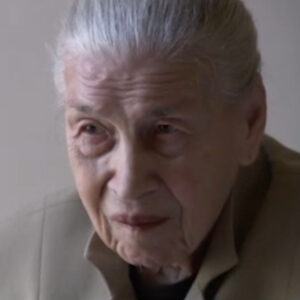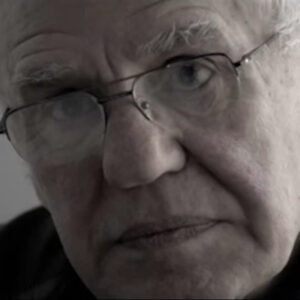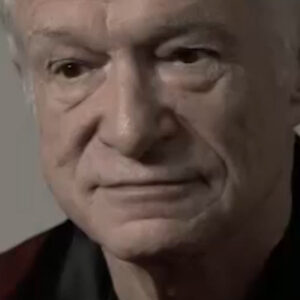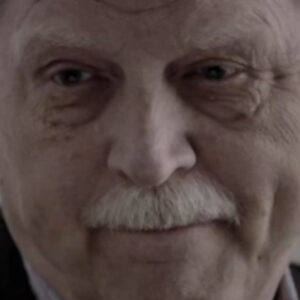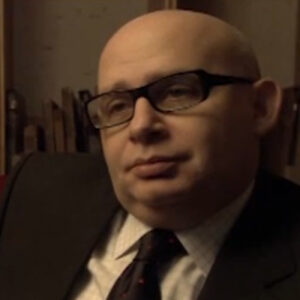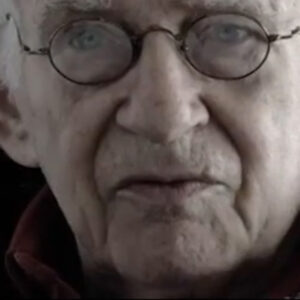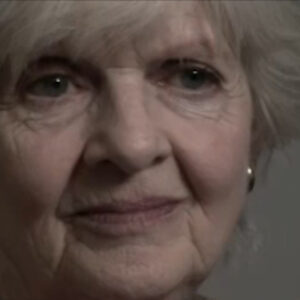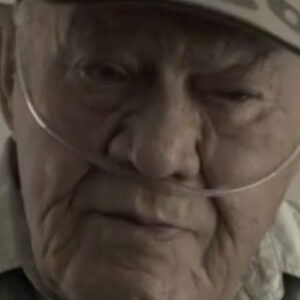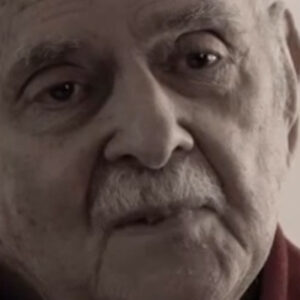Interviewer: Start at the beginning. Talk a little bit about this. Explain a little bit about the type of photographer you are and sort of that time period of nineteen fifty four. Fifty five times.
Bob Henriquez: Well, I was I was almost the beginning of my my my career. And she was so attractive, so beautiful. So, so gorgeous. Oh you couldn’t resist. She every she was on everybody’s mind. So it took a lot of snapshots of her.
Interviewer: I’m OK. OK. Let’s talk about the whole Ebbets Field shoot that day and what was going on there. And this guy is and was. And any way that. Were there a lot of photographers? Because I only have ever seen those shots of yours.
Bob Henriquez: I don’t think there was a lot of photographers there. But it was crawling with visitors, you know, hundreds of people sort of clamoring around her. As a matter of fact, I stayed away with a telephoto lens and just stuff like that to be able to get focused in on her because she was so, so active, so attractive, so yummy. You know.
Interviewer: How was she with that crowd and guys, just and these guys, you see it in your pictures. You just see these. This is the same thing. This amazing eagerness on the part of Clinton as well.
Bob Henriquez: She certainly depicted that, you know, she depicted the quality of attraction to men of all ages, stars, all gray beards, powerful men.
Interviewer: Yeah, yeah, yeah, I think we can. As you were telling me before, you were telling me before, your perspective is photography. Talk bit about what you did, how you would see a picture, the difference in working with her. You know, when you see you continue. I love that. When you said that.
Bob Henriquez: Well, when you when you focus in on a story, you’re all your antenna is out. The you know, your what you like, what you don’t like. You you react emotionally to the emotional output of the subjects, sometimes the relation of one person to another. That’s why we shoot a lot of sequences. It’s it’s like almost movies and still some stocks some time. But and it’s something internal, something that you’re not cognizant of planning this. But but it’s feeling it’s emotion. And those feelings and emotions control your vision, your design, your content, the relationship between people. That’s the whole story.
Interviewer: So you you have the greatest screen goddess ever. And I would like it just taking all of that into account. Your relationship, then. That’s it. But watching that, her relationship with everything going.
Bob Henriquez: Well, I didn’t have much of a relationship with her Ebbets Field, because it’s outdoors and I was working a little distance away. But when they were doing seven year itch, I was right in the middle of the window and right behind her. And, you know, she was she was just too perfect.
Interviewer: Tell the story of the behind her.
Bob Henriquez: Well, she had a very expressive derriere. I took a lot of pictures of it. One Italian magazine ran eight pages of her very year alone. And it said something about, you know, I got so that’s bizarre. A girl to be married to. It just it was funny. It was funny. She did.
Interviewer: Yeah. I mean, one of the things that you feel like you’ve talked about is to tell me how to tell them that about even. You can sort of see through that exterior, because at that point, she was still very open and very ready, I think, even though we knew what was to come later. You also detected it.
Bob Henriquez: Yes, I’ve I’ve. She was so. It was like a bee and honey. She was so attractive. But she attracted all this all this love and attention. And God knows what.
Interviewer: But you also said that you could sort of see that there was so much been so mishandled.
Bob Henriquez: Yes. Shame. I knew what I knew. You knew something of her background, you know, Norma Jean Martins and the first marriage and all that. And her fight to come up on top. And I just felt sorry for her in that respect because she had she had had a rough road to hoe, you know. And I just sense that. But I knew it from a little bit of information about her background, you know, just just like everybody else reads in the papers, you know? And of course, she was hot news.
Interviewer: But you got her at that very right moment. I mean, you sort of got her in DiMaggio time status. And still in that coming up time.
Bob Henriquez: I think DiMaggio was probably the best thing for her. In a way, I was amazed when I said the writers name again, Arthur Miller. Arthur Miller married her. You know, I couldn’t see a man of his temperament and knowledge and standing for falling in love with a little girl like that. I didn’t understand that.
Interviewer: When you were in that little area with her and there doing the windows shot. Yeah. A couple other guys with you who, you know, Ellie, do it, for example. And. I.
Bob Henriquez: You know, I don’t recall Ellie had been there. Yes, he was there.
Interviewer: You were there. Well, I’ve seen Jackson, both of you. But what was it just about that character, her way of leading to you, the crowd outside? I mean, it’s a beautiful pictures yours.
Bob Henriquez: You don’t have to point a picture at that girl and she’s on, you know, I mean, a camera. She was made for a camera. You know, she was created to be a subject. Gorgeous subject. That’s it. Enjoy yourself, do you think? I think so. I think I think she felt a certain warmth and giving this this love to everybody. You know, it looked real. It felt real. You know, the funny thing about a picture is you can’t really talk about a picture. Picture speaks for itself.
Interviewer: Which you is dead, by the way. Absolutely. I mean, just that that’s why I say to you before searching through that so many contact sheets and stuff that I’ve looked at and knowing the magnifier on the answer. Dukas of misfits. I had not seen these things and they just absolutely stood out. So it is also what the photographer brings.
Bob Henriquez: Oh, yes, definitely. What about what you see, you know, and how you how you arrange it? And the moment when you get that picture is is is an emotional relation with the subject.
Interviewer: What was the occasion of the Ebbets Field shoot? What was she doing there?
Bob Henriquez: Oh, God. God only knows. I don’t know. I just heard she was going to be playing soccer. There is a drought absent, father. I went to address some. Somebody organized it. Maybe Ebbets Field did. I don’t know if it if they did. They got their money’s worth.
Interviewer: What does it make you think? Now, I mean, these couple of pictures of yours here and you’ll see when we go upstairs now, more than four years after her death, the fact that she would be 80 this year, which is incomprehensible, I think, to people that she hangs in the museum.
Bob Henriquez: Yeah, it’s it’s it’s I don’t know how she would say she maybe she maybe she wasn’t born to live eight years. She couldn’t live with what she went through. You know, the powerful interests that controlled her physically, sexually, you know, was was disturbing.
Interviewer: Anything else that you can think of this is fine for now, and what we’ll do is walk upstairs. That’ll be great.
Bob Henriquez: You’re not going to sit on my lap after all. Oh. You’ve got some good stuff. Excellent staff.

